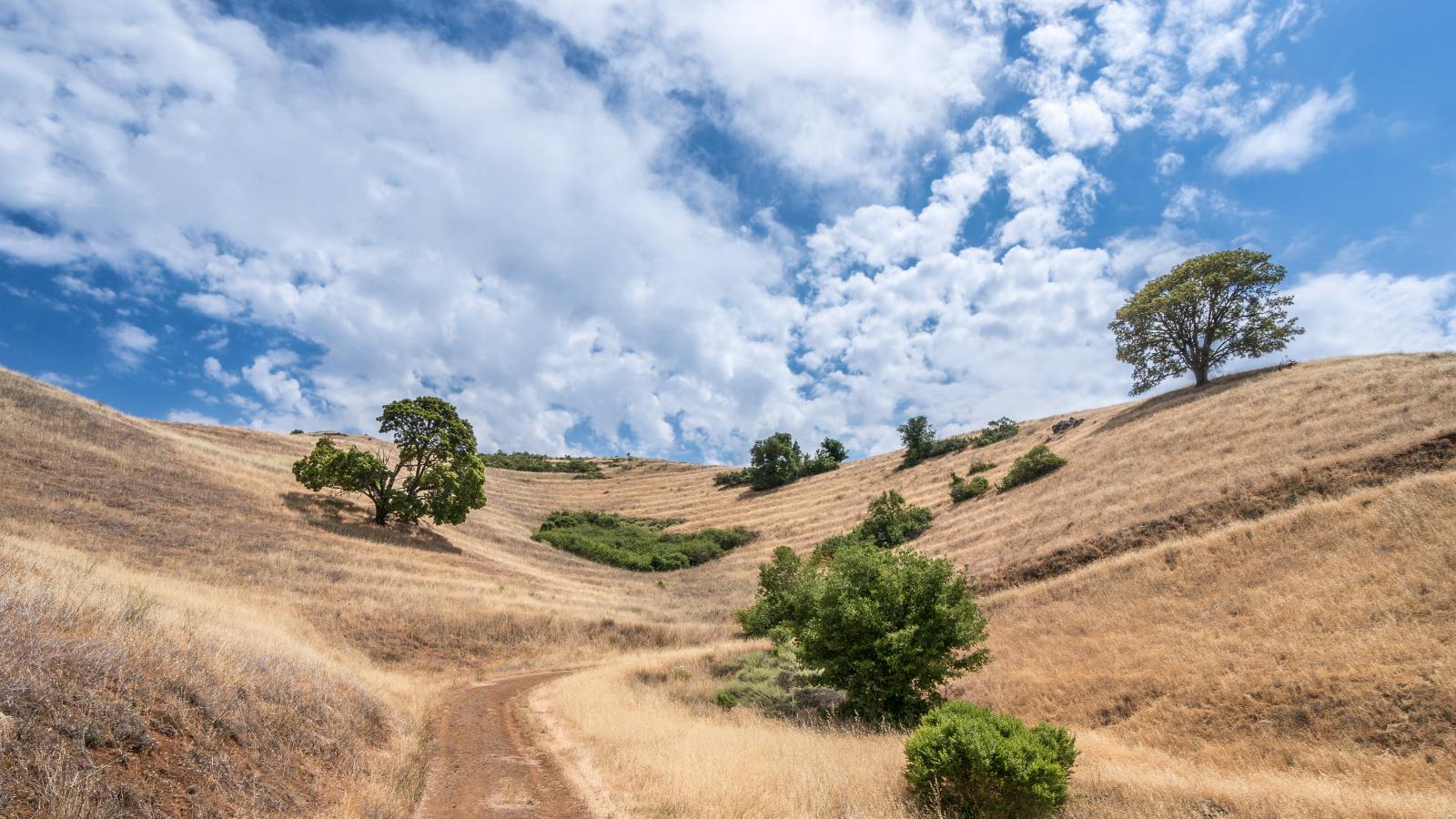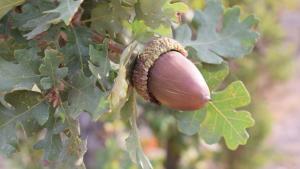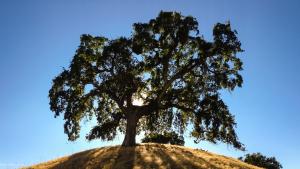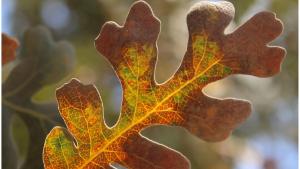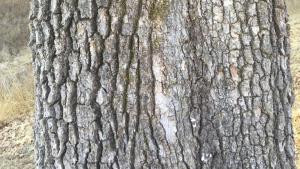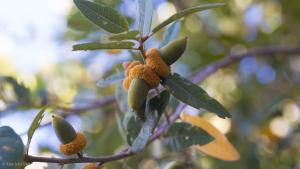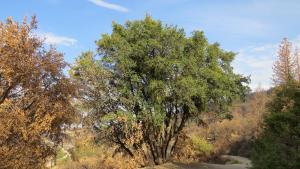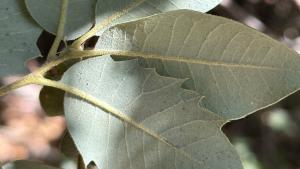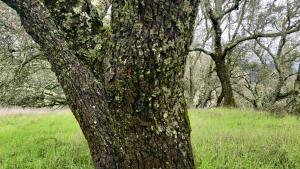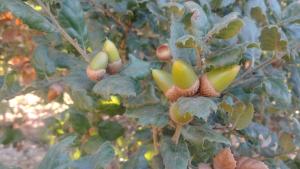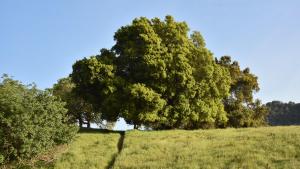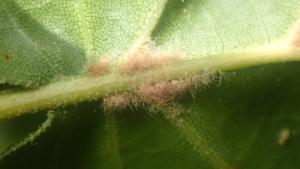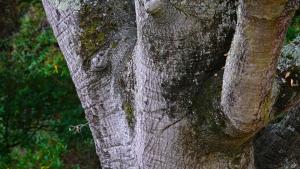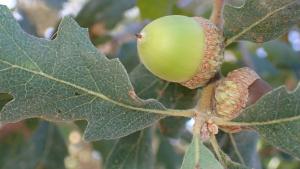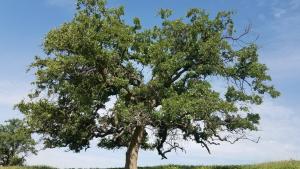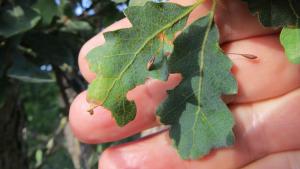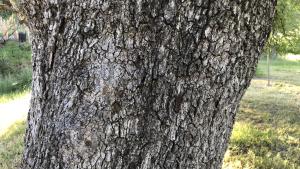Native California oaks are iconic species, creating habitat that supports the rich biodiversity found within our district lands. From the foggy coastal range to the dry and rocky foothills, oaks species adapted to the unique microclimates of the San Francisco Bay Area and thrived. Roughly one-third of California’s native oak species can be found in San Mateo and Santa Clara Counties.
These trees are a food source and habitat to many, with over 300 species of birds, reptiles, amphibians, and mammals relying on the woodlands at some point in their lifecycle. Locally, these animals include the acorn woodpecker, ash-throated flycatcher, California ground squirrel, gray fox and others. The oak canopy creates respite from summer heat and allows native understory plants to flourish, including toyon, manzanitas, ceanothus, and a wide diversity of grasses. Numerous Indigenous tribes formed deep relationships with oaks, with a significant portion of their traditional diet being derived from acorns. Like many other native plants, oaks can be fire adapted and some species were managed with low-intensity fire.
Each year, when autumn arrives in the San Francisco Bay Area, you will begin seeing acorns when out hiking the Midpen preserves or walking around town. This time of year, when both acorn and leaves are present, is great for identifying oaks. This is because some species are sympatric, meaning that they are closely related and share the same geographic location, making them challenging to differentiate. Here are four species commonly found across Midpen preserves, with some tips on identifying them.
Valley Oak
Valley Oak (Quercus lobata) is a deciduous species with deeply lobed leaves that change color to a yellow-orange each autumn. Run your fingers across the leaf surface and notice the soft, velvet-like texture. The cone shaped acorns begin dropping in October. The bark is a pale gray with narrow furrows.
Canyon Live Oak
Canyon Live Oak (Quercus chrysolepis) are the most widely spread oak species in California. It has dark green, oblong leaves that come to a slight point at the tip. The leaf edges are typically smooth but can have spines. Of special note-the leaves are geometrically flat, which is not true for other species. The bark is light gray and narrowly furrowed, with a scaly appearance. Mature acorns are 1-2 inches with a comparatively shallow, golden cap. One common name, Golden Cup Oak, denotes this unique trait.
Coast Live Oak
Coast Live Oak (Quercus agrifolia) are found in the California coastal ranges south from Mendocino. The dark green, leathery leaves have an oval shape and spine-toothed edge that curls inward. These cupped leaves retain their shape and resist being laid flat. A distinctive feature of this species are the red tufts found on the underside of the leaf. These “hairy armpits” can be found along the mid-vein axils. The acorns are long and narrow, measuring up to 2.5 inches. The gray bark on the Coast Live Oak is noticeably furrowed.
Blue Oak
Blue Oak (Quercus douglasii) is a deciduous species that can be identified by the rounded acorn and light gray bark that can appear white from a distance. The common name comes from the tinged blue-green leaves that are shallowly lobed. Blue oaks are the most drought tolerant of the native oaks. They form deep root systems and support a smaller canopy and leaf size to minimize water lost through evapotranspiration. Find this species in mixed hardwood forests growing alongside manzanita and other oaks.
An oak at Monte Bello Open Space Preserve (Deane Little)
Oaks in Midpen Preserves
Many of the Midpen preserves support oak species and woodlands. If you are looking for trails to try out your new identification skills head to Ancient Oaks Trail in Russian Ridge Open Space Preserve, White Oak Trail in Monte Bello Open Space Preserve or the Franciscan Loop Trail in Los Trancos Open Space Preserve.

